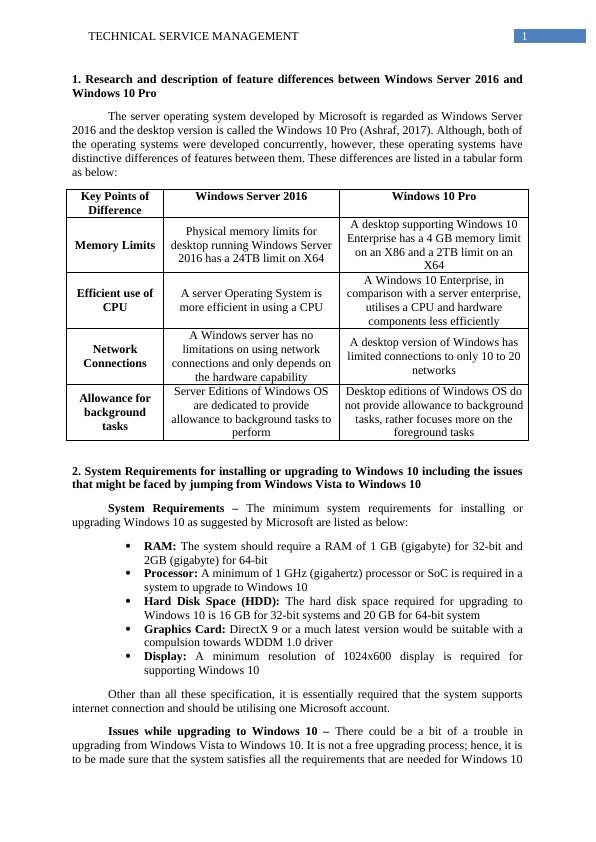Technical Service Management - Windows Server 2016 vs Windows 10 Pro, System Requirements for Windows 10, Security Essentials in Windows 10, NAT and Windows Registry
Added on 2023-06-14
5 Pages1590 Words147 Views
End of preview
Want to access all the pages? Upload your documents or become a member.
Assignment | Optimize Operating System Software
|29
|3522
|17
Server Management: Windows Server Hardware Configuration, Roles and Features, Basic and Dynamic Disks, IPv4 vs IPv6 Comparison
|9
|1723
|458
Virtualization in Organizations: Advantages, Disadvantages, and System Requirements
|15
|692
|385
Design, Installation and Configure Enterprise Network Servers
|61
|3825
|50
Methodologies and Technologies for Delivery of IT Projects
|9
|1797
|48
Network Technology and Management Assessment Task 2
|11
|2392
|69


